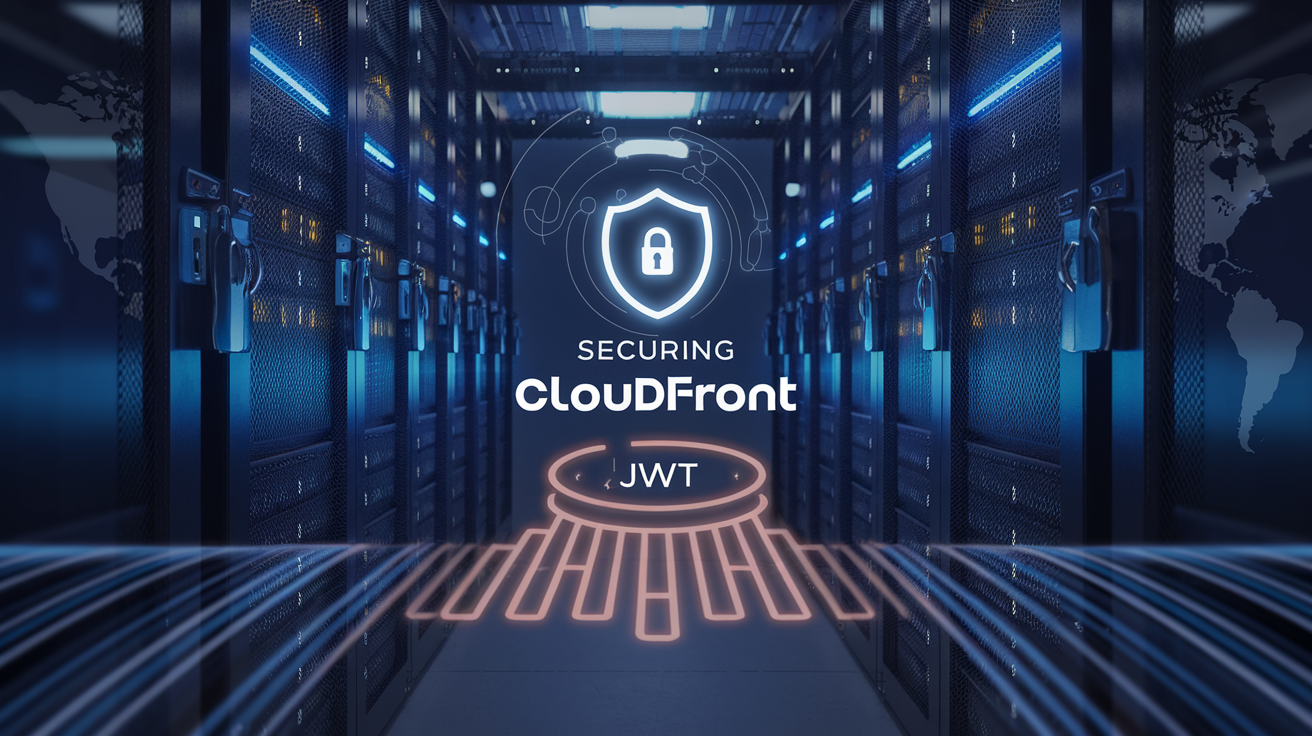AWS CloudFront can dramatically speed up your website and reduce costs, but only if you configure it correctly. Many developers and DevOps engineers struggle with getting the most out of this powerful content delivery network, often missing key optimization opportunities that could save thousands in bandwidth costs and improve user experience.
This comprehensive guide is designed for web developers, system administrators, and DevOps professionals who want to master AWS CloudFront optimization and squeeze every bit of performance from their CDN setup. You’ll learn practical techniques that go beyond basic configuration to achieve real-world results.
We’ll start by breaking down CloudFront’s architecture and core components so you understand exactly how requests flow through the system. Then we’ll dive deep into strategic cache configuration for maximum performance, covering the cache settings that make the biggest impact on speed and efficiency. Finally, we’ll explore advanced distribution settings and optimization techniques that separate amateur implementations from professional-grade CloudFront deployments.
You’ll also discover how to set up comprehensive CloudFront monitoring and analytics to track your optimization wins, plus proven cost optimization strategies that can cut your AWS CDN bills without sacrificing performance. By the end, you’ll have a complete CloudFront performance tuning toolkit ready to deploy in production environments.
Understanding CloudFront Architecture and Core Components
Edge locations and regional edge caches for reduced latency
AWS CloudFront operates through a global network of 450+ edge locations spanning six continents, strategically positioned to minimize latency between users and content. These edge locations serve as the first line of defense against slow load times, caching frequently requested content closer to end users. Regional edge caches act as intermediate layers between edge locations and origin servers, maintaining larger cache storage for less popular content that doesn’t warrant storage at every edge location. This hierarchical caching architecture ensures that popular content remains readily available at edge locations while optimizing storage costs for medium-demand content at regional caches.
Origin servers and distribution configurations
CloudFront distributions define how content flows from origin servers to edge locations, supporting multiple origin types including Amazon S3 buckets, Application Load Balancers, and custom HTTP/HTTPS endpoints. AWS CloudFront configuration allows multiple origins per distribution, enabling sophisticated content routing based on path patterns, headers, or query parameters. Distribution settings control cache behaviors, compression, security policies, and geographic restrictions. Origin failover configurations provide automatic switching between primary and secondary origins, ensuring high availability even when your main content source experiences downtime.
Cache behaviors and routing mechanisms
Cache behaviors determine how CloudFront handles different types of requests, allowing granular control over caching policies, TTL values, and request forwarding. Each behavior pattern matches specific URL paths and applies corresponding cache rules, query string handling, and header forwarding configurations. CloudFront’s routing mechanisms evaluate incoming requests against ordered cache behaviors, processing the first matching pattern. Advanced routing supports Lambda@Edge functions for dynamic content manipulation, custom header injection, and real-time request modification before reaching origin servers.
SSL/TLS termination and security features
CloudFront handles SSL/TLS termination at edge locations, reducing computational load on origin servers while maintaining end-to-end encryption. The service supports custom SSL certificates, AWS Certificate Manager integration, and automatic HTTPS redirects for secure content delivery. Security features include AWS Web Application Firewall integration, DDoS protection through AWS Shield, signed URLs for private content access, and field-level encryption for sensitive data protection. Geographic blocking capabilities restrict content access based on viewer location, while custom security headers enhance browser-level protection against common web vulnerabilities.
Strategic Cache Configuration for Maximum Performance
TTL Settings Optimization for Different Content Types
Static assets like images, CSS, and JavaScript files benefit from longer TTL values of 24-48 hours, while dynamic content requires shorter TTLs of 5-15 minutes. Configure CloudFront cache settings based on content volatility – product pages need 1-hour TTLs, while news articles work best with 30-minute caching. API responses should use custom cache policies with TTLs ranging from 60 seconds to 10 minutes depending on data sensitivity. Set different TTL values for mobile and desktop versions to maximize AWS CloudFront optimization across devices.
Custom Cache Policies and Origin Request Policies
CloudFront’s managed cache policies provide baseline performance, but custom policies deliver superior CloudFront performance tuning results. Create policies that cache based on query parameters for e-commerce sites, excluding session tokens while including product IDs and category filters. Origin request policies should forward only necessary headers like Accept-Language and User-Agent while blocking sensitive authentication headers. Combine cache and origin request policies to reduce origin load by 70-90% while maintaining personalized content delivery through selective header forwarding.
Cache Invalidation Strategies and Cost Management
Implement versioned URLs instead of frequent invalidations to achieve CloudFront cost optimization – this approach eliminates invalidation fees while ensuring instant content updates. When invalidations are necessary, use wildcard patterns strategically to minimize costs, targeting specific directories rather than individual files. Schedule bulk invalidations during low-traffic periods and batch multiple updates together. Monitor invalidation patterns through AWS CloudFront analytics to identify content that requires better caching strategies, ultimately reducing both invalidation costs and origin server load.
Advanced Distribution Settings and Optimization Techniques
Origin Failover and Multi-Origin Configurations
Setting up origin failover with CloudFront creates bulletproof content delivery by automatically switching to backup origins when primary servers fail. Configure primary and secondary origins with health checks monitoring HTTP status codes and response times. Multi-origin setups distribute different content types across specialized servers – static assets from S3, dynamic content from EC2, and API calls from Lambda. This AWS CloudFront optimization strategy reduces single points of failure while improving global performance through intelligent routing based on origin health, geographic proximity, and current load patterns.
Compression Settings for Bandwidth Reduction
CloudFront’s automatic compression feature reduces bandwidth costs by up to 85% while accelerating content delivery speeds. Enable compression for text-based files including HTML, CSS, JavaScript, JSON, and XML by configuring the “Compress Objects Automatically” setting in your distribution. The service applies GZIP compression when browsers send appropriate Accept-Encoding headers. Custom compression policies let you specify file types and minimum sizes for compression. This CloudFront performance tuning technique particularly benefits users on slower connections while reducing origin server load and improving cache hit ratios across edge locations.
HTTP/2 and HTTP/3 Protocol Optimization
Modern protocol support through HTTP/2 and HTTP/3 dramatically improves CloudFront distribution performance by enabling multiplexed connections, server push capabilities, and reduced latency. HTTP/2 eliminates head-of-line blocking while allowing multiple requests over single connections. HTTP/3 builds on QUIC protocol foundations, offering faster connection establishment and better performance over unreliable networks. Enable these protocols in CloudFront settings to automatically negotiate the best available version with client browsers. These AWS CDN configuration improvements deliver faster page loads, especially for sites with multiple resources and mobile users.
Geographic Restrictions and Compliance Requirements
Implement geographic restrictions through CloudFront’s geo-blocking features to meet regulatory compliance and content licensing requirements. Configure allowlists or blocklists for specific countries using ISO 3166-1 country codes. The service determines user locations through IP geolocation databases updated regularly for accuracy. Custom error pages provide user-friendly messages when access is restricted. Advanced scenarios combine geo-restrictions with signed URLs or cookies for granular access control. These CloudFront best practices help organizations comply with GDPR, content licensing agreements, and regional data sovereignty requirements while maintaining optimal performance for authorized users.
Real-Time Monitoring and Performance Analytics
CloudWatch metrics for traffic and performance insights
CloudWatch provides comprehensive metrics for AWS CloudFront monitoring, giving you detailed visibility into cache hit ratios, origin latency, error rates, and bandwidth consumption. Key metrics include requests per second, bytes downloaded, and 4xx/5xx error codes that help identify performance bottlenecks. Set up custom dashboards to track cache efficiency and origin shield performance, enabling proactive optimization decisions. Configure alarms for critical thresholds like cache hit ratio drops below 85% or origin response times exceeding 500ms to maintain optimal CloudFront performance tuning.
Real User Monitoring integration and setup
Real User Monitoring (RUM) integration captures actual user experience data from browsers worldwide, measuring page load times, resource download speeds, and geographic performance variations. CloudWatch RUM automatically collects Core Web Vitals metrics including Largest Contentful Paint and First Input Delay directly from user sessions. Configure RUM by adding the CloudWatch JavaScript snippet to your web pages and define custom events to track specific user interactions. This real-world performance data complements synthetic monitoring, providing insights into how AWS CDN configuration impacts different user segments and connection types.
Log analysis for identifying bottlenecks
Access logs from CloudFront distributions contain granular request-level data including cache status, edge location, user agent, and response times that reveal performance patterns. Analyze log files using AWS Athena or ElasticSearch to identify slow-performing origins, frequently missed cache objects, and geographic regions with suboptimal performance. Look for patterns in HTTP status codes, request methods, and file types that indicate CloudFront cache settings need adjustment. Export logs to S3 and create automated analysis pipelines that flag unusual traffic patterns or performance degradation across your AWS CloudFront analytics infrastructure.
Cost Optimization and Resource Management
Price class selection for geographic coverage
Choosing the right price class directly impacts your CloudFront cost optimization strategy while maintaining performance standards. AWS offers three price classes: All Edge Locations (most expensive but global coverage), Price Class 200 (excludes most expensive regions), and Price Class 100 (only North America and Europe). Price Class 100 costs roughly 30% less than All Edge Locations while serving 85% of global internet users. Analyze your traffic patterns using CloudFront analytics to identify where your users actually come from. If 90% of your traffic originates from North America and Europe, Price Class 100 delivers significant savings without performance degradation. For applications with strict latency requirements in Asia-Pacific or South America, Price Class 200 provides better coverage at moderate cost increase. Review geographic distribution quarterly and adjust price classes as your user base evolves.
Reserved capacity and committed usage discounts
AWS CloudFront offers Reserved Capacity pricing for predictable, high-volume workloads that can reduce costs by up to 20%. Reserved Capacity requires 12-month commitments starting at 10TB monthly data transfer. Calculate your average monthly data transfer over the past year to determine if Reserved Capacity makes financial sense. Committed usage discounts kick in automatically when you exceed certain monthly thresholds without upfront commitments. Track your monthly data transfer patterns and identify seasonal spikes to optimize your reservation strategy. Combine Reserved Capacity with AWS Savings Plans for additional discounts on compute resources used by Lambda@Edge functions. Monitor your actual usage against commitments monthly to avoid overprovisioning. Consider splitting large applications across multiple distributions to optimize reservation utilization and maintain flexibility for scaling individual components.
Transfer acceleration cost-benefit analysis
CloudFront Transfer Acceleration adds approximately 25% to standard data transfer costs but can improve upload performance by 50-500% for global users. The feature routes uploads through CloudFront edge locations using AWS backbone network instead of public internet. Calculate the business value of faster uploads against additional costs by measuring current upload completion rates and user abandonment. For applications with large file uploads from remote locations, Transfer Acceleration often pays for itself through improved user experience and reduced support costs. Test Transfer Acceleration using AWS Speed Comparison Tool to measure actual performance gains from your target geographic regions. Disable Transfer Acceleration for applications with primarily small file uploads or users concentrated near your origin server. Monitor CloudWatch metrics for upload success rates and latency improvements to validate ROI. Consider implementing Transfer Acceleration selectively based on file size thresholds or user geographic location.
Lambda@Edge function optimization for efficiency
Lambda@Edge functions execute at CloudFront edge locations, charging for both request count and execution duration, making code efficiency critical for cost control. Optimize function runtime by minimizing cold starts through efficient code structure and avoiding unnecessary imports. Keep function memory allocation as low as possible while maintaining performance, since pricing scales linearly with allocated memory. Cache expensive computations within function execution context to reuse across multiple requests in the same container. Profile your Lambda@Edge functions using CloudWatch Logs to identify bottlenecks and optimize slow operations. Implement request filtering at the edge to reduce unnecessary origin requests and Lambda function invocations. Use viewer request and viewer response events for lightweight operations, reserving origin request/response events for complex logic requiring origin data. Monitor function execution metrics and adjust timeout values to prevent unnecessary charges from hung functions while ensuring sufficient time for legitimate operations.
AWS CloudFront transforms how users experience your web applications by strategically placing content closer to them worldwide. By mastering cache configuration, fine-tuning distribution settings, and keeping a close eye on performance metrics, you can dramatically reduce load times while keeping costs under control. The combination of smart caching strategies and proper monitoring creates a powerful foundation for delivering lightning-fast content to users anywhere on the globe.
Take the time to implement these CloudFront optimization techniques in your current setup. Start with basic cache configurations, then gradually work your way up to more advanced distribution settings. Regular monitoring will show you exactly where improvements are making the biggest impact, helping you make data-driven decisions that benefit both your users and your bottom line. Your applications deserve the performance boost that comes with a well-optimized CloudFront setup.













